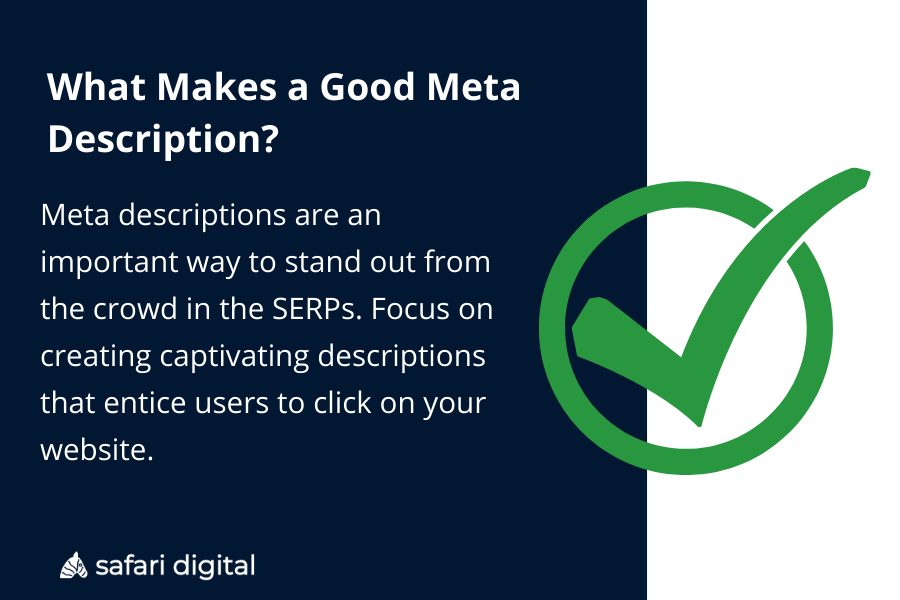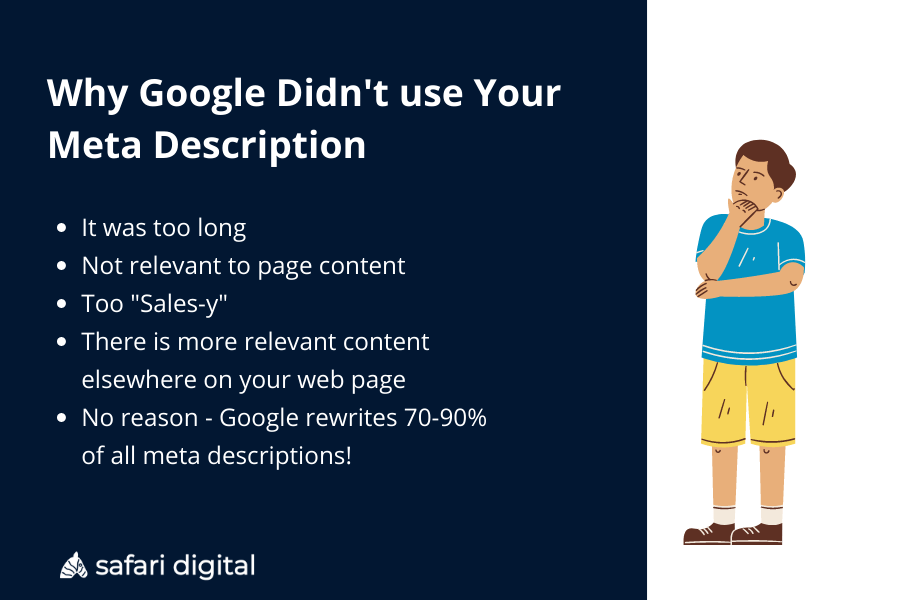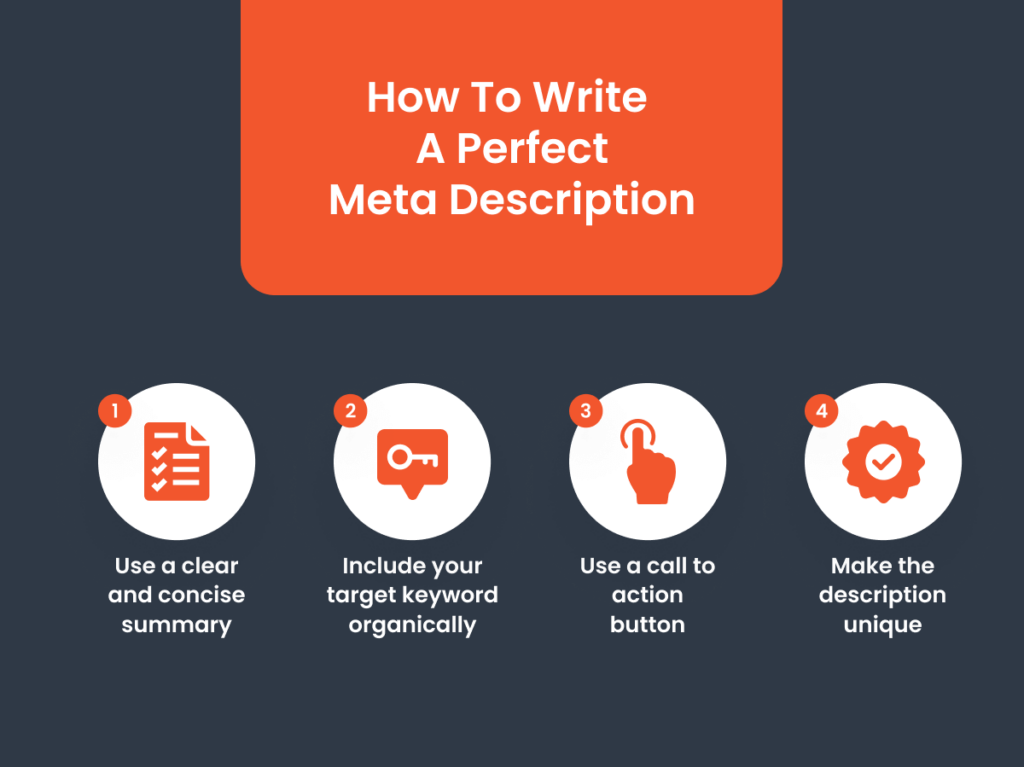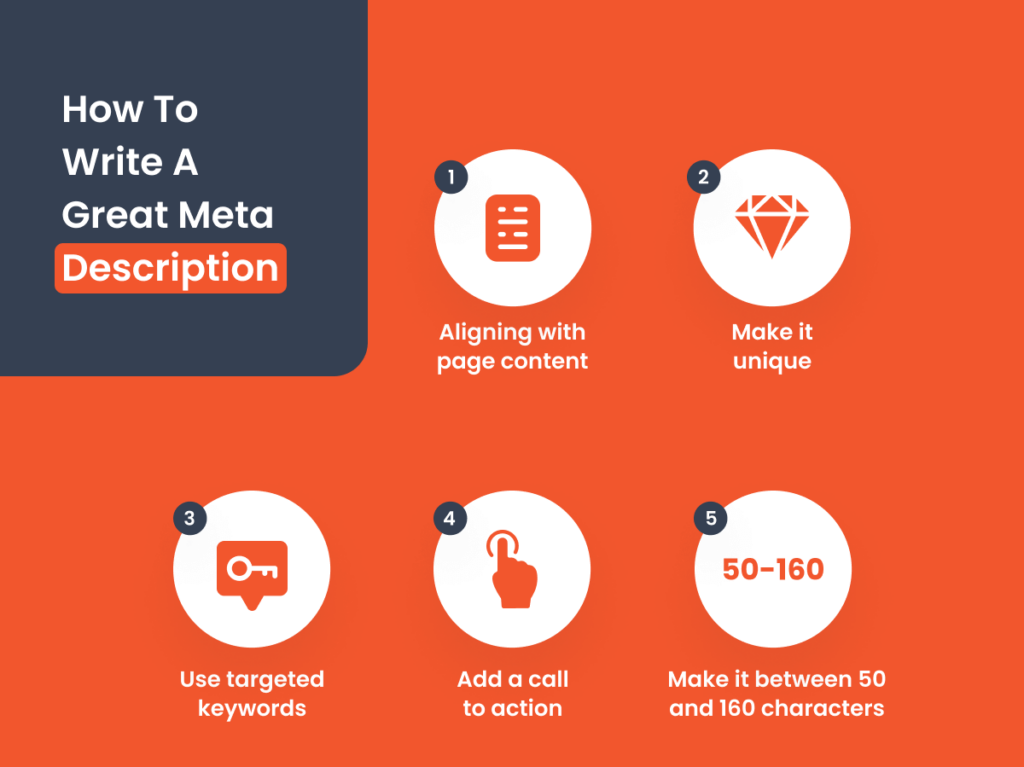Unlock the mystery of meta descriptions: how these 155-character snippets can boost your website’s visibility and optimize search engine results.

Image courtesy of via DALL-E 3
Table of Contents
- Introduction to Meta Descriptions
- How Meta Descriptions Work
- Creating a Meta Description
- Examples of Good Meta Descriptions
- Common Mistakes in Meta Descriptions
- Optimizing Meta Descriptions
- Tools for Creating Meta Descriptions
- Testing and Monitoring Meta Descriptions
- Conclusion
- Frequently Asked Questions
Introduction to Meta Descriptions
Have you ever wondered how search engines like Google show you a short snippet of what a webpage is about before you click on it? Well, that short snippet is what we call a meta description. Let’s dive into what meta descriptions are and why they are important.
What is a Meta Description?
Imagine you’re looking for information on your favorite animal, let’s say dolphins. When you type “dolphins” into a search engine, you’ll see a list of websites that talk about dolphins. Right underneath the titles of these pages, you’ll find a small summary that gives you a peek into what each webpage contains. This snippet of information is the meta description.
Why are Meta Descriptions Important?
Meta descriptions play a crucial role in helping people decide whether they want to click on a webpage or not. They give you a glimpse of what you can expect to find on that page. If the description is interesting and relevant to what you’re looking for, you’re more likely to click on that link. It’s like a little sneak peek into the content of the webpage!
How Meta Descriptions Work
When you search for something on the internet, the results you see aren’t just random. They’re carefully chosen by search engines like Google to match what you’re looking for. That’s where meta descriptions come in. These short summaries show up under the title of a webpage in the search results. They give you a sneak peek of what the page is about before you click on it.
Helps Search Engines
Search engines are like super smart detectives trying to find the best answers to your questions. Meta descriptions help them solve the case faster! By reading these descriptions, search engines can better understand what a webpage is all about. This makes it easier for them to match the right pages to your search queries. So, next time you’re searching for something, thank those little meta descriptions for helping you find what you need.
Creating a Meta Description
When it comes to meta descriptions, the key is to create a concise and engaging snippet that entices people to click on your webpage. Here are some tips on how to craft an effective meta description:

Image courtesy of www.safaridigital.com.au via Google Images
Keep it Short and Sweet
Meta descriptions should be brief, around 150-160 characters, to ensure that they are fully displayed in search results. Keep your description to the point and summarize the content of your page accurately.
Make it Interesting
Use compelling language that grabs the reader’s attention. Include words that spark curiosity or convey value to make people want to click on your link. Remember, the goal is to entice users to visit your webpage.
Examples of Good Meta Descriptions
An effective meta description provides a concise summary of what users can expect to find on a webpage. For example, a meta description for a blog post about “Tips for Healthy Eating” might read: “Discover easy and delicious recipes for a healthier lifestyle in our latest blog post on healthy eating habits.” This description gives a clear idea of the content and entices users to click for more information.
Attention-Grabbing Example
Another key aspect of a good meta description is the use of attention-grabbing language that sparks curiosity. For a webpage selling eco-friendly cleaning products, a compelling meta description could be: “Transform your home into an eco-oasis with our range of sustainable cleaning solutions. Say goodbye to harsh chemicals and hello to a greener, cleaner home!” This description not only highlights the unique selling point of the products but also encourages users to click through to learn more.
Common Mistakes in Meta Descriptions
One common mistake people make when writing meta descriptions is making them too long. Remember, these descriptions are meant to be brief summaries that entice people to click on the link. If your meta description is too lengthy, search engines may cut it off, causing important information to be lost. Aim for around 150-160 characters to ensure your message is concise and impactful.

Image courtesy of www.safaridigital.com.au via Google Images
Too Vague
Another mistake to avoid is creating vague or general meta descriptions. If your description lacks specific details or relevant keywords, it may not attract the right audience or provide enough information to entice clicks. Make sure your meta descriptions are clear, informative, and tailored to the content of the webpage they represent. Avoid being too generic and strive to captivate users with compelling language.
Optimizing Meta Descriptions
Optimizing meta descriptions is an essential part of improving your webpage’s search engine ranking. By following a few simple tips, you can ensure that your meta descriptions are working effectively to attract visitors to your site.
Use Keywords
One key aspect of optimizing meta descriptions is to include relevant keywords that relate to the content of your page. Think about what words or phrases people might use when searching for information like what you offer. By incorporating these keywords into your meta description, you increase the chances of your page appearing in search results.
Ensure Uniqueness
Each page on your website should have a unique meta description. Avoid duplicating descriptions across multiple pages, as this can harm your SEO efforts. By crafting custom descriptions for each page, you provide a concise and accurate summary of what visitors can expect, leading to higher click-through rates.
Tools for Creating Meta Descriptions
When it comes to crafting effective meta descriptions for your webpages, there are several tools and software available to help streamline the process and optimize for search engine visibility.

Image courtesy of appsalon.com.au via Google Images
SEO Plugins
One of the most popular tools used for creating meta descriptions is SEO plugins like Yoast. These plugins can assist in writing and optimizing meta descriptions by providing real-time feedback and suggestions based on SEO best practices. They can also help ensure that your descriptions are the right length and contain relevant keywords to improve your page’s ranking in search results.
Meta Description Generators
If you’re looking for a quick and easy way to generate meta descriptions, online tools like Meta Description Generators can be incredibly helpful. These generators analyze your content and automatically create meta descriptions that are tailored to the specific webpage. While they may not always be as personalized as manually crafted descriptions, they can save you time and provide a solid starting point for your meta description creation process.
Testing and Monitoring Meta Descriptions
When it comes to meta descriptions, it’s not just about creating them – it’s also essential to test and monitor their performance to ensure they are effectively enticing users to click on your webpage. Here are some strategies for testing and monitoring your meta descriptions:
A/B Testing
A/B testing is a method where you create two different versions of a meta description and show them to different sets of users. By analyzing which version has a higher click-through rate, you can determine which description is more effective in attracting users to click on your page. This experimentation helps you understand what resonates best with your target audience and allows you to refine your meta descriptions accordingly.
Use Analytics
Utilizing tools like Google Analytics can provide valuable insights into the performance of your meta descriptions. By tracking metrics such as click-through rate, bounce rate, and time spent on page, you can assess the effectiveness of your meta descriptions in driving user engagement. This data can guide you in making informed decisions to optimize your meta descriptions for better results.
Conclusion
In conclusion, meta descriptions serve as vital snippets of information that summarize the content of webpages. They play a crucial role in helping users decide whether to click on a link in search results. Crafting effective meta descriptions is essential for improving visibility and attracting relevant traffic to websites.

Image courtesy of appsalon.com.au via Google Images
Recap
To recap, meta descriptions are brief summaries that appear under the title of a webpage in search results. Keeping them concise, engaging, and relevant to the content is key to maximizing their impact. These descriptions help both users and search engines understand the context of a webpage quickly.
Final Thoughts
As you delve into the world of crafting meta descriptions, remember to keep them unique for each page, use relevant keywords, and test different versions to optimize their performance. By practicing writing and testing meta descriptions, you can enhance the visibility and click-through rates of your webpages. So, go ahead and start creating compelling meta descriptions to boost your website’s SEO!
Want to turn these SEO insights into real results? Seorocket is an all-in-one AI SEO solution that uses the power of AI to analyze your competition and craft high-ranking content.
Seorocket offers a suite of powerful tools, including a Keyword Researcher to find the most profitable keywords, an AI Writer to generate unique and Google-friendly content, and an Automatic Publisher to schedule and publish your content directly to your website. Plus, you’ll get real-time performance tracking so you can see exactly what’s working and make adjustments as needed.
Stop just reading about SEO – take action with Seorocket and skyrocket your search rankings today. Sign up for a free trial and see the difference Seorocket can make for your website!
Frequently Asked Questions
How Long Should a Meta Description Be?
A meta description should be around 150-160 characters long. This ensures that the summary is concise and fits within the space provided in search results. Keeping it short and sweet helps to convey the main idea of the webpage efficiently.
Can I Use the Same Meta Description for Multiple Pages?
It is recommended to have a unique meta description for each page on your website. Having distinct descriptions for every page helps search engines understand the content of each page better. This, in turn, improves the chances of your pages appearing in relevant search results. Using the same description for multiple pages may lead to confusion for search engines and users, as they won’t know what specific content each page contains.







